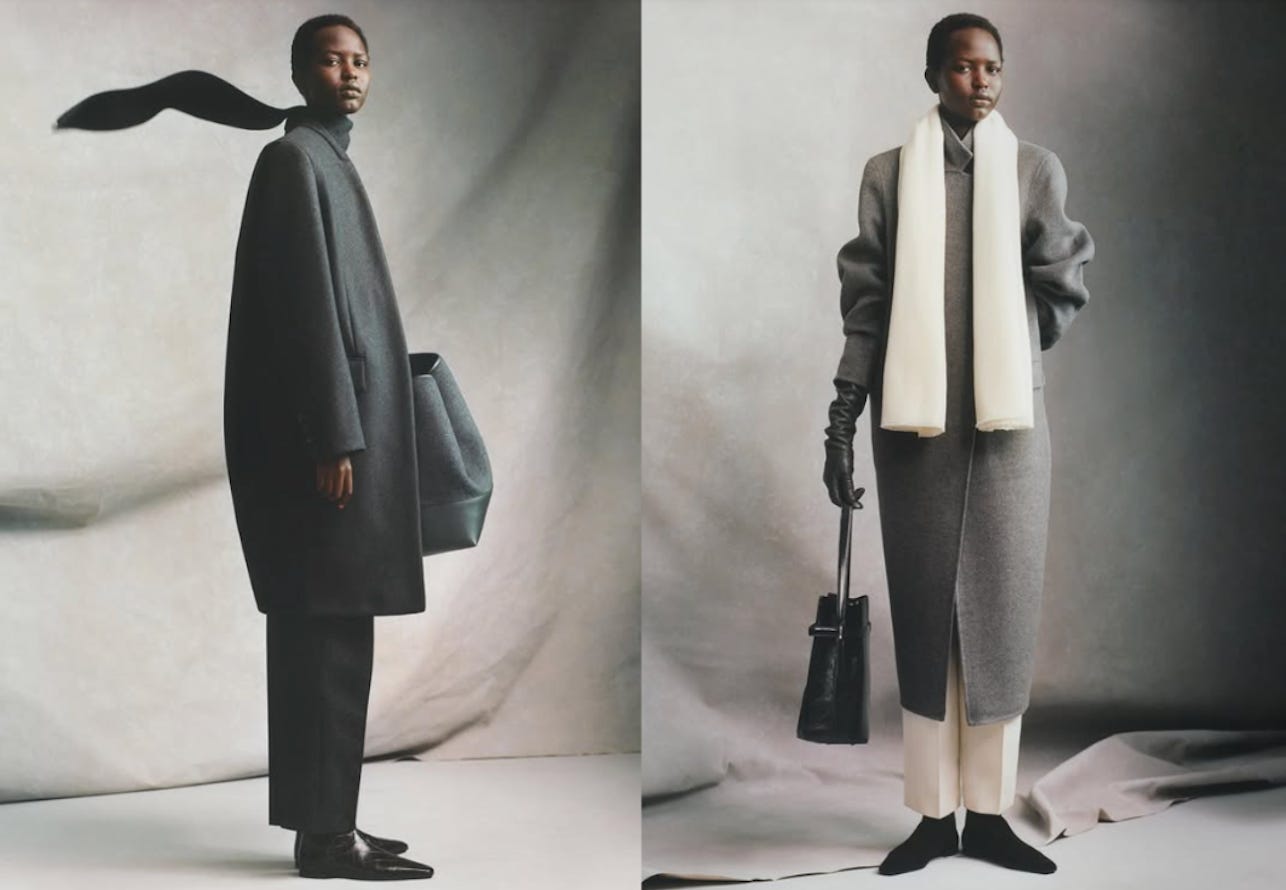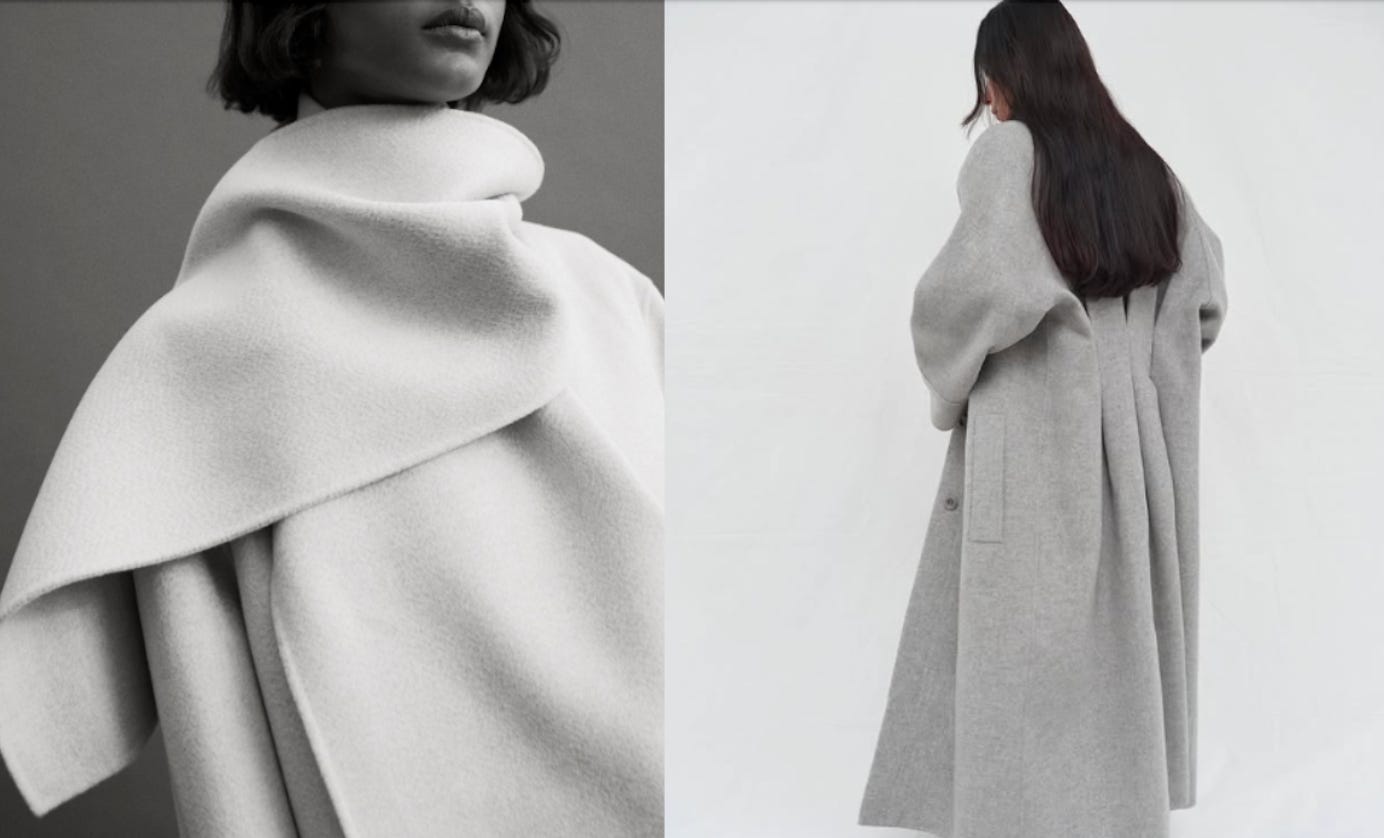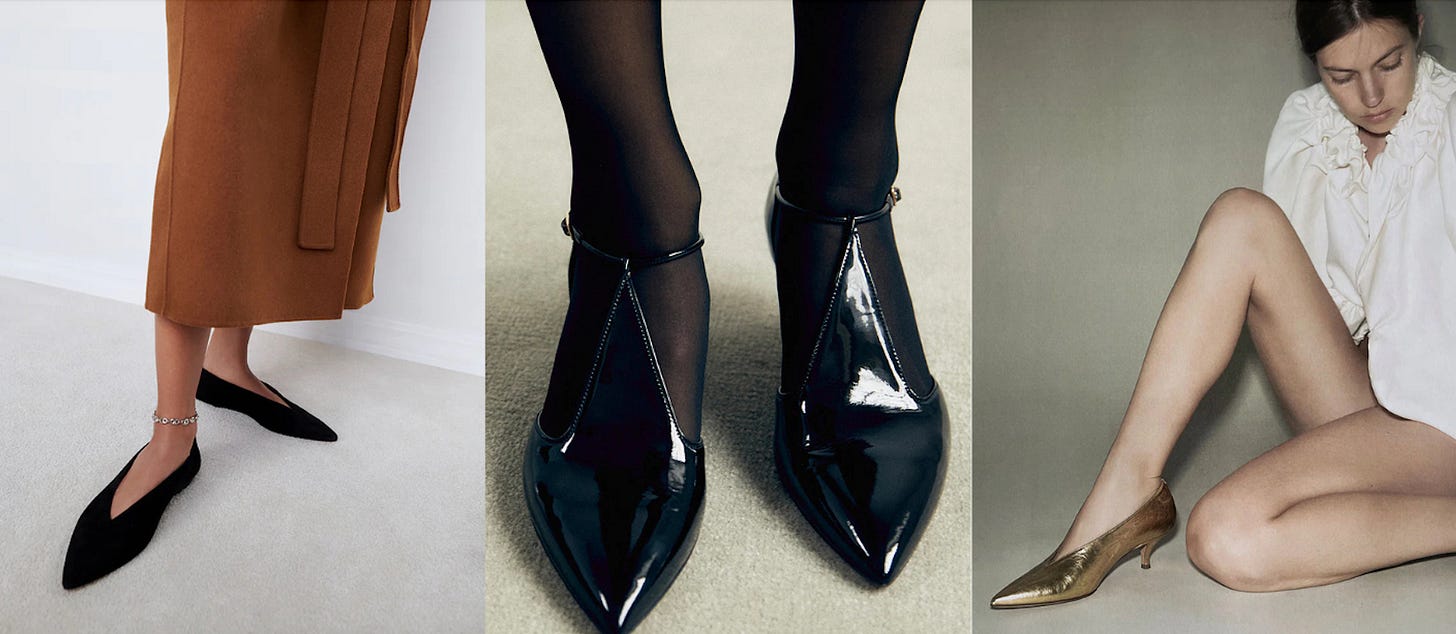I am excited to do more styling writing this year, and I think you are excited to see more of it, too. I’m currently pondering ways to create shopping content separate from the regular Sunday newsletter so you can opt in or out. Keep your eyes peeled. Today’s letter explores the contentious notion that some outfits look expensive while others don’t. Whether you actively seek to replicate that look or you find the whole concept ludicrous - I’m still unsure - you will learn something new about styling your wardrobe.
I think everyone finds the idea of their clothes looking ‘expensive’ compelling—at least, I have never heard anyone express the opposite. However, looking ‘expensive’ has become associated with looking polished and minimalist, and not everybody wants that. It’s key to note that what looks expensive morphs with each trend cycle. Over the last two decades, the pendulum has swung between austere simplicity and dramatic proportions. These shifts make blindly chasing expensive markers risky. A better approach is to understand what makes something look refined right now - intentional volume, strategic negative space, subtle tension in proportions, all of which I explore in detail in this letter - and make it your own. It sometimes takes understanding the rules to break them successfully.
The Row's latest collection optional (exhale).
High-Priced Proportions
The current ‘expensive’ aesthetic plays with proportions in a way that's far more nuanced than any traditional styling rules like thirds or golden ratios. From these designs, we see a sophisticated manipulation of visual weight. Silhouettes show deliberate imbalance rather than harmony and classic proportions.
Trousers
The sweet spot hits a precise ‘floating ankle’ point, where the hem hovers above the shoe. The result is a continuous line with a clear visual break in an unexpected place. Whether it makes the leg line longer, I let you be the judge. Even though I’m 5’0, I find how sharp it looks extremely satisfying. This length works well with a sweater that hits just below the most pronounced curve of the hip. If you’re shopping your closet, is there a forgotten pair of pants you can bring to the tailor for a fresh cut?

Coats and Jackets
It starts with the shoulder placement. The first-class versions drop slightly beneath the natural shoulder line, with some creating a subtle forward tilt. Hems hit mid-calf or just above the ankle - anything shorter or in between looks less intentional. All the better if sleeves show a quarter-inch of whatever's underneath. Volume has also become more strategic. We're seeing controlled fullness in specific areas: through the back while keeping the shoulders slim and through the sleeves while maintaining a cleaner body. Double-faced wool and cashmere, a scarf detail, an extra-wide lapel, or a pleated waist are design features that elevate these expensive-looking coats above the rest. You really don’t need to splurge on the scarf-detailed coat - a scarf in a matching tone and similar fabric - By Malene Birger, for example, makes delicious woven wool bibs and ponchos - over your existing coat will look just as lavish.

The ‘expensive’ take on extreme temperatures is a fluffy texture. Shearling coats have become the ultimate signifier of perceived value. I’m camp in favour. Shearling looks expensive today, and it also did in my earliest memory of style, back in the nineties, when my parents wore the shearling jackets they still wear today. Their price tags are heart-stopping, even the high-street versions, but they are reflected in the material for once. It is a for-life investment, save for the high-end versions that are often ‘only’ 50% to 100% more expensive. My cherished Totême shearling coat is currently $2,000 off.
Shoes and Boots
They’re all about negative space. The most elevated versions leave small, strategic gaps. Think Mary-Janes, ankle straps hanging delicately above the ankle bone, and pumps cut low to show the entire arch of your foot. If you're handy with a leather punch, you might be able to add an extra hole to your ankle strap to achieve this floating effect. The high-priced detail is the deliberate space between the shoe and the trouser hem.

Boots toe shapes have become more subtle - neither pointy nor round, but somewhere




